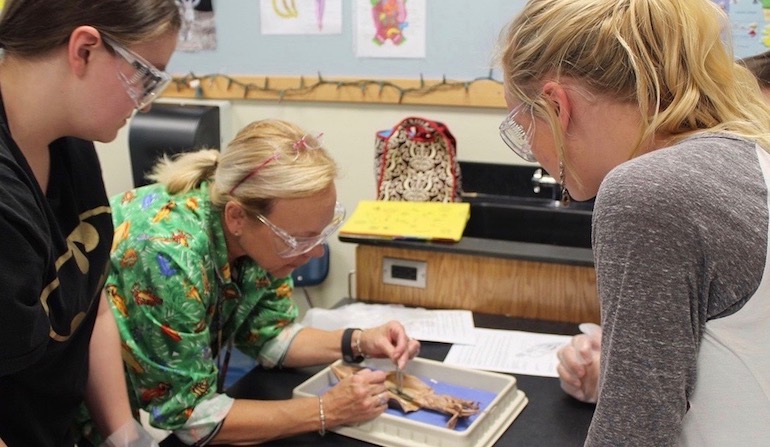 Education
Education
How to Teach Evolution in a Public School — My Experience


A reader, Julie, emailed me with a question that I often hear from teachers and home educators. For every teacher who asks, I infer that many other teachers have wondered the same thing but hadn’t thought to reach out. Julie writes:
I teach high school biology. Would you advise me on a good high school biology textbook? I own a number of your publications, and love your products, in addition to attending your ID Education Day in March with my students.
I have successfully used Discovering Intelligent Design at the 9th grade level. However, I am looking for an actual complete textbook for the year. Thank you for your time!
I assume Julie teaches in a private or Christian school setting, in which case there are various options, the best of which may be a piece-meal approach using a variety of supplemental resources alongside a standard core textbook.
Many of these, of course, would not work in a public school. But the public school context is the one where my own experience lies.
I had an opportunity to teach high school biology for a year, a few years ago, and I ended up doing quite a bit of research the summer beforehand on the best textbooks available. Since this was a public school, I had to stick to purely orthodox choices. For my purposes in preparing lessons, I found the college text Campbell’s Biology to be of the highest caliber. That said, it was saturated with Darwinian assumptions.
Science and Philosophy
What did I do? Well, I introduced the course by holding a lengthy discussion about the difference between science and philosophy. I warned the students that I was prepared to teach the former but ill-equipped to teach the latter. Anytime we encountered a section stating Darwinian assumptions as fact, I would ask my class whether it fell under the heading of science or philosophy. If the latter, we would either leave it for “extra reading” or (more frequently) we would agree to depart from the study of proper science for a few minutes to discuss the merits or weaknesses of the claims being made.
While I never used Explore Evolution (from Discovery Institute) in the classroom, I used it extensively at home to prepare for these discussions regarding evolution, and the strengths and weaknesses of the evidence for it.
As long as universities insist on teaching Darwinian evolution as unquestionable truth, I believe it’s critical to (a) expose high school students to the arguments so that they aren’t blindsided or embarrassed when they get to college, (b) help them to recognize the difference between fact and theory, and (c) train them to have intelligent and civil debates about the evidence, for the sake of the subject matter itself and to sharpen their argumentative skills.
That is my best advice for now, offered here with the caveat that I have yet to find a fully satisfying solution. I hope this helps!
Photo credit: SchoolPRPro, via Pixabay.
